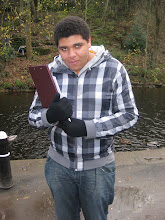He was an English Photographer who used multiple cameras to capture motion. In 1872 he was hired by Leland Stanford, the governor of California, to prove the assertion of "unsupported transit". This was whether all four of a horses legs left the ground at the same time, whilst galloping. Muybridge was able to prove that they did all leave the ground with a single negative, however not as previously thought. They did not leave the ground out stretched as in the paintings, but whilst tucked under the body of the horse.
Muybridge was able to capture this negative through the use of multiple stills cameras, which were lined up along the edge of the a race track. Each camera was then actuated by a taut string that was stretched across the race track and attached to the shutter. This was so when the horse went past it would tug on the string and the film would be exposed.
After Eadweard went on to take photos at the University of Pennsylvania. These pictures generally involved the study of people and true human form. Here he used a bank of cameras which usually surrounded a subject/s so that he could study them different POV's.
Eadweard also invented the Zooproxiscope, which projected images from a rotating glass disk in quick succession this gave the impression of motion.
